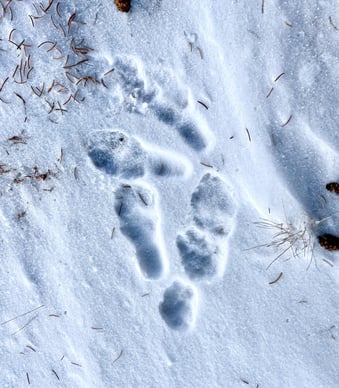Although it may not feel like it, this year's trip around the sun will include an extra day. In 2024, February gets an extra day. Instead of 28 days, February will have 29 days, making this calendar year a leap year! A leap year, also termed a “sidereal” year, is defined as a calendar year with 366 days. You’re probably asking yourself “well why do we have leap years?” Even if you’re familiar with the term, the mathematics behind it is a little more complicated than we might think.
A calendar year is typically 365 days, which is called a “solar year.” It actually takes approximately 365 days 5 hours 48 minutes and 56 seconds for the earth to orbit the sun. A leap year, or sidereal year, has an extra 5 hours 48 minutes and 56 seconds. If we did not account for this extra time, the seasons would begin to drift. Over a period of about 700 years, our calendar summer in the northern hemisphere would begin to occur in December rather than May or June!

Running Snowshoe hare.

Photo by Paige McAllister: Snowshoe hare tracks at Mayflower Gulch, December 5, 2023
To account for this extra time, we started adding an extra day every four years to keep our common years accurate and adjusted to the sidereal year, but that’s not entirely accurate either. Contrary to popular belief, a leap year does not happen every 4 years. This is because the time difference between a common year and a sidereal year is not exactly 24 hours. Instead, it’s 23.262222 hours. Rounding strikes again! If we added a leap day every four years, we would make the calendar year longer by over 44 minutes. To account for this extra time, some leap years have to be skipped. The rule is that if the year is divisible by 100 and not divisible by 400, that leap year is skipped. The next time a leap year will be skipped is 2100.
With a bonus day this February, I challenge you to get outside and see if you can find any signs of animals that “leap” every year. A “leaper” or “hopper” is a term used in animal tracking to define the gait of animals whose hind feet are significantly larger than their front. The front feet come down first, followed by the back feet landing in front of the front feet, creating two large depressions parallel to each other and vertical to the front feet. Imagine it like playing leapfrog! Snow is a great medium for biologists when studying animal tracks. Depending on the time of year, tracks in snow can show up almost flawlessly. Some animal families with leaper track patterns are rabbits, hares, chipmunks, squirrels, and frogs. Whether the year has 365 or 366 days, these animals are working hard to survive the mountain winter and if you look closely their tracks tell their unique story of survival.
Paige McAllister is a Naturalist at Walking Mountains Science Center who takes extra long during hikes because she stops to take photos of every track she sees.







